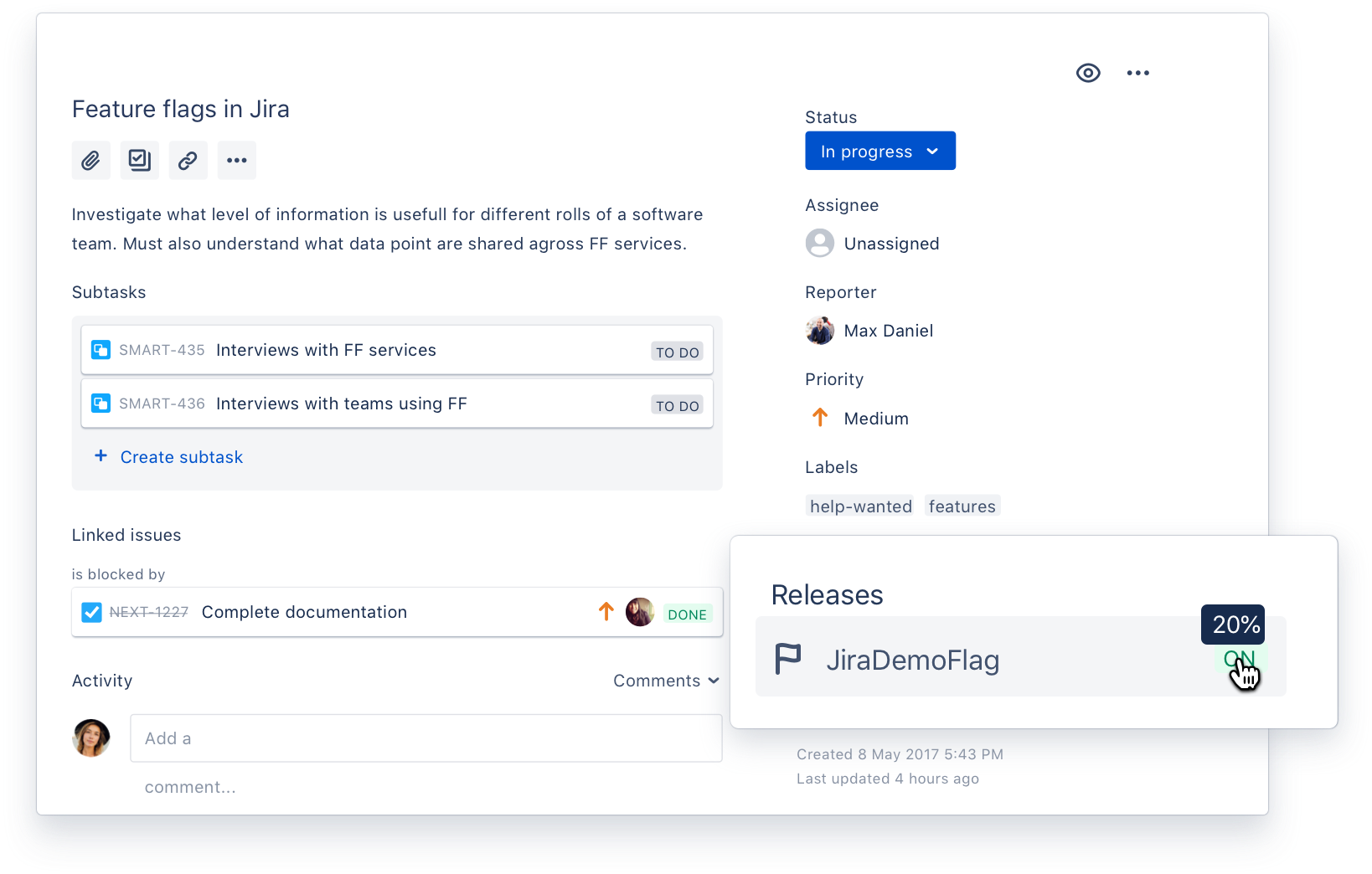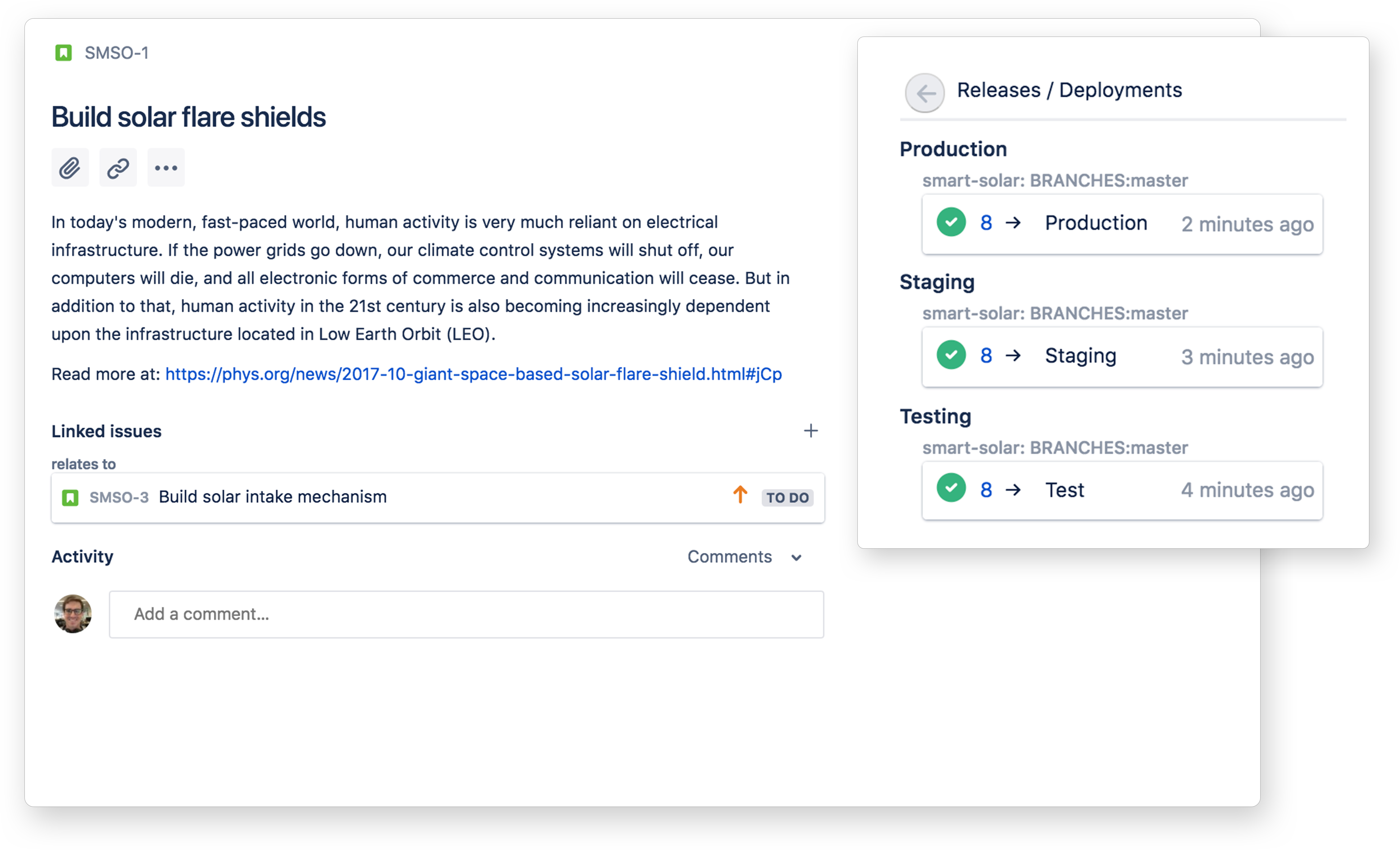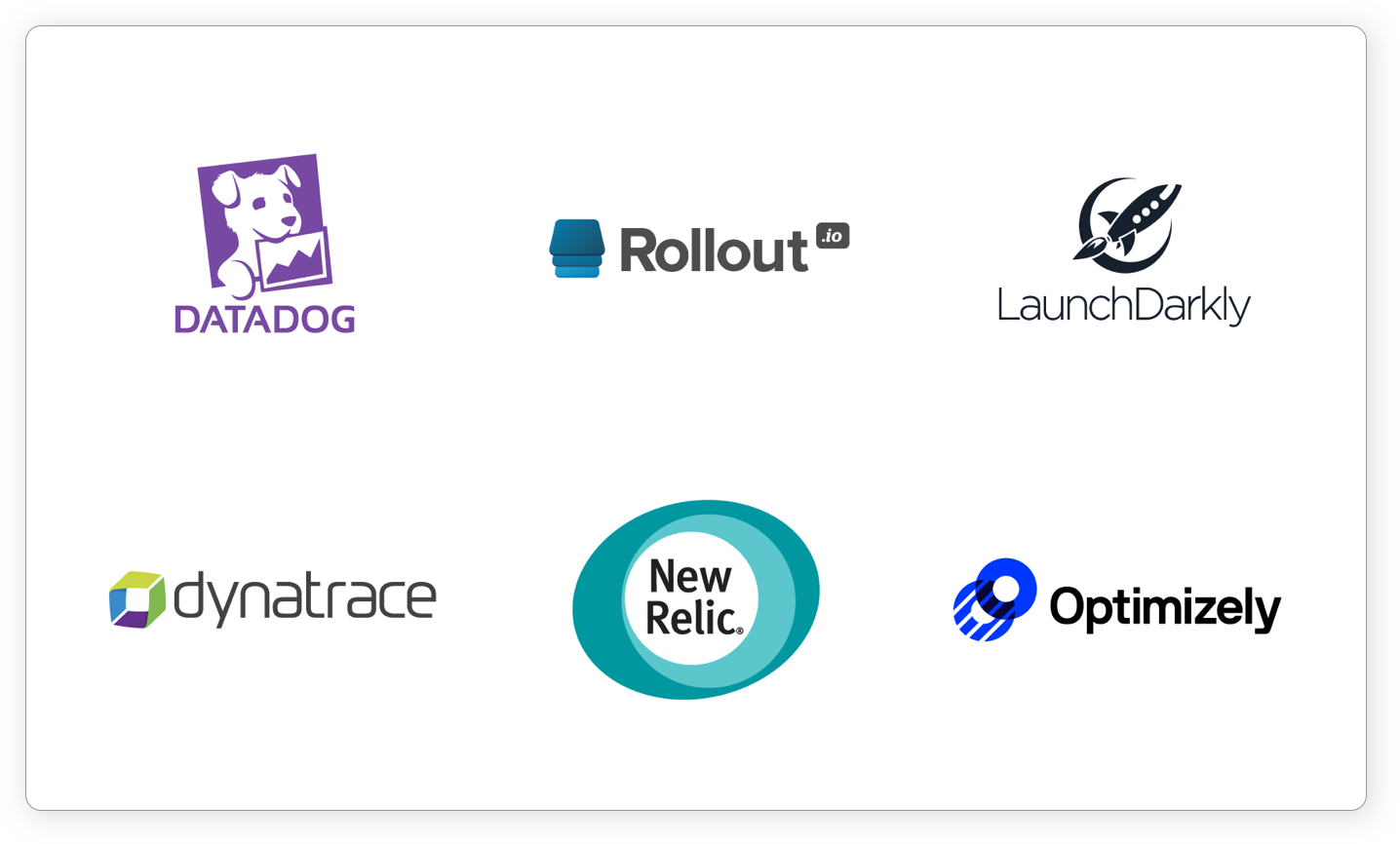Outcome Driven Development
Focus on outcomes, not outputs
Focus on value, not outputs,
with Jira Software
Outcome driven development is all about the value of outcomes over outputs and Jira Software allows teams to take control over exactly what is put in customers' hands.
Feature Flagging
Feature flagging allows teams to roll out new features and functionality gradually to customers, allowing them to move faster and with better control over the value delivered to customers.


Jira Software and Bitbucket
Integrate Jira Software and Bitbucket together and gain insight into real-time build and deployment information in the context of all your other issue data.
Measure what matters
Jira integrates with an assortment of apps and extensions that enable teams to measure the customer impact of the new features they roll out.

Ready to shift from outputs to outcomes?
Raising the flag: The rise of Feature Flagging
We partnered with Rollout.io to dive deep into the world of feature flagging.
5 tips for getting started with Feature Flags
This blog shares everything you need to utilize feature flags in your outcome-driven organization.
Create continuous visibility with Bitbucket Pipelines
Check out how Bitbucket Pipelines and Jira Software gives you continuous visibility from backlog to release.